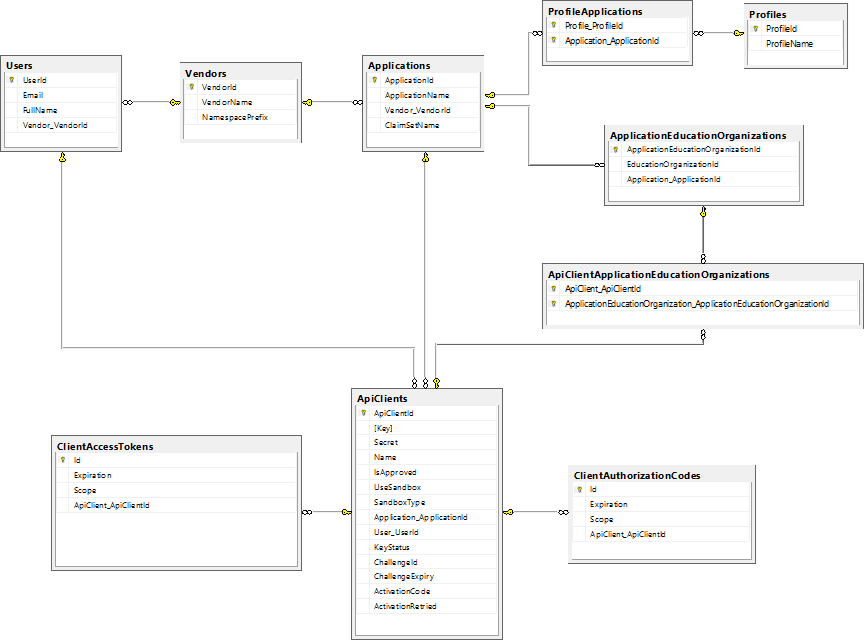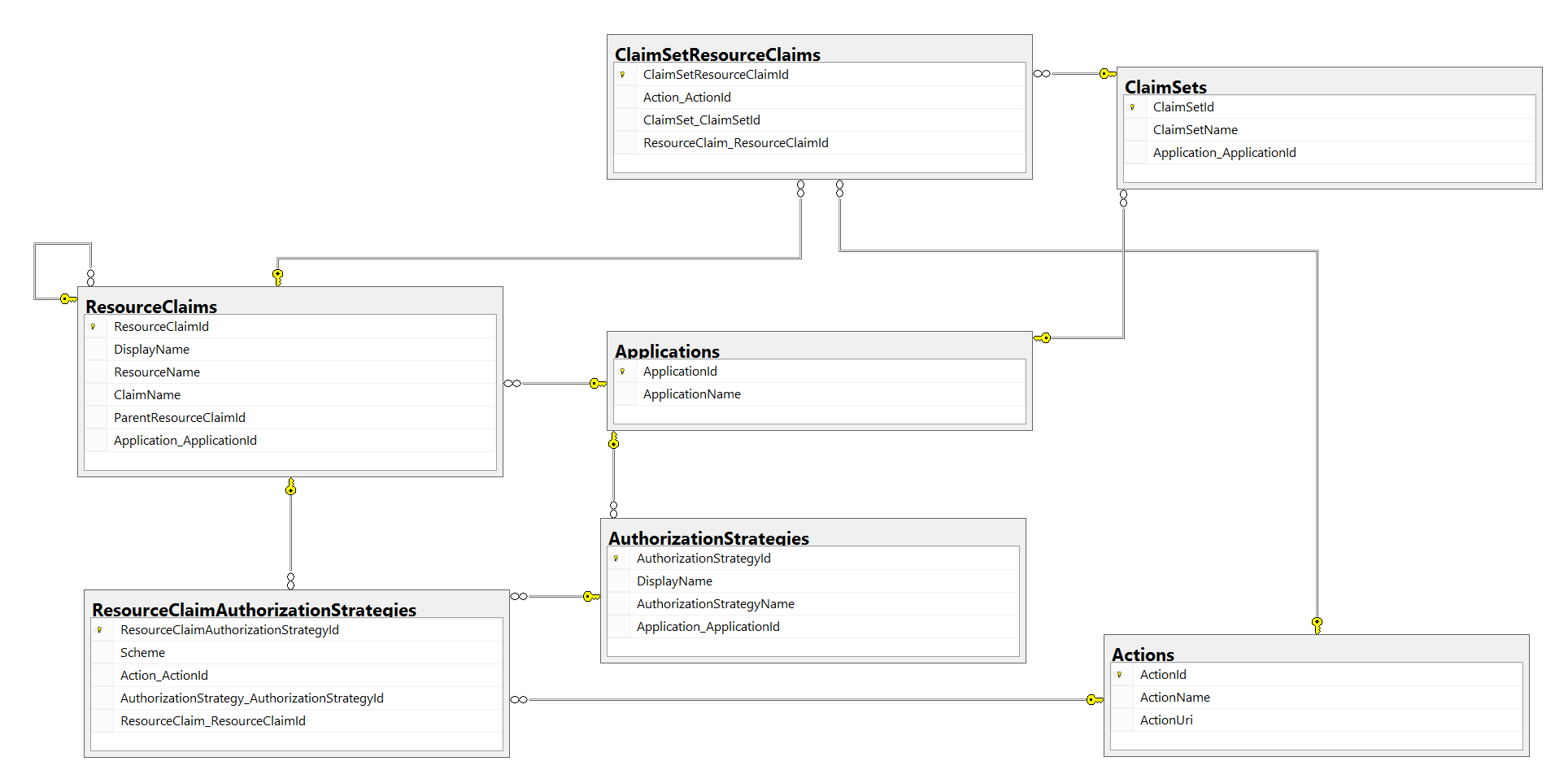This version of the Ed-Fi ODS / API is no longer supported. See the Ed-Fi Technology Version Index for a link to the latest version.
Security Configuration Data Stores
Security settings for the Ed-Fi ODS / API are stored in two separate databases, EdFi_Admin and EdFi_Security. Both databases are required. The EdFi_Admin database stores security configurations specific to an instance of the Ed-Fi ODS / API. The EdFi_Security database also stores security settings for the ODS / API, but in a more general format intended for use by other Ed-Fi applications. Said another way, the EdFi_Admin database belongs to the ODS / API, while the EdFi_Security database stores security settings for multiple Ed-Fi applications, of which only one is the ODS / API.
Ed-Fi Admin Database
The EdFi_Admin database stores the following configuration entities:
- Vendors. Each education software vendor is represented in the admin database and serves as a wrapper for individual users and applications. Vendor records include a namespace prefix, which takes the form of the URL for the vendor's website. The namespace prefix is used by the claims system where callers need to manage their own data.
- Vendor Users. Each vendor may have one or more users defined. The database includes the full name and e-mail address for each user for identification purposes.
- Vendor Applications. A list of applications supported by education software vendors on behalf of one or more education organization (specifically, an LEA such as a district, or a school). A single application may be associated with more than one education organization or a separate vendor application record can be created for each education organization. In addition, each vendor application is assigned a claim set, defined in the Ed-Fi Security database, which defines its level of access.
- API Clients. Each API client record references a vendor user and application. In addition, each API client record may be reused between vendor application-LEA combinations, or be uniquely defined for each vendor application to education organization association. Finally, each API client record includes both a key and a secret, which function as a public and private key for the Ed-Fi ODS / API, respectively.
The following entity relationship diagram (ERD) provides additional data on the structure of the EdFi_Admin database:

Ed-Fi Security Database
The EdFi_Security database stores information about available resource claims and their relationship to claim sets, Ed-Fi applications, and authorization strategies. The following high-level entity descriptions provide additional context:
- Ed-Fi Applications. Distinct Ed-Fi applications that require access to resources within an education agency’s Ed-Fi technology implementation. Currently, there is only one record in this table, representing the ODS / API itself.
- Resource Claims. Each resource exposed via the ODS / API interface will have a record in the resource claim table. Access to these resources is controlled by their inclusion in claim sets and their associated authorization strategies. Resource claims are organized as a hierarchy, so that a set of related resource claims can be included in a claim set by referencing just the parent claim.
- Resource Claim Sets. A claim set is a collection of resource claims for a common type of API client, such as that of a SIS vendor. Claim sets are created for convenience so that vendor applications do not have to be individually associated to resource claims. A resource claim can belong to multiple claim sets.
- Resource Claim-Authorization Strategy. Access to each resource claim will be granted through at least one resource claim-authorization strategy. A resource claim-authorization strategy combines a resource claim with additional logic, an authorization strategy, to validate the claim. For example, one available authorization strategy ensures that a vendor has access to all related entities before granting access to the requested resource while another requires no additional authorization. In addition, a resource claim-authorization strategy pertains to an available action: Create, Read, Update, Delete.
- Actions: Each action (Create, Read, Update, Delete) is included as a record in the action table for reference by resource claim-authorization strategies.
The following ERD further outlines the entities and entity relationships in the EdFi_Security database:
